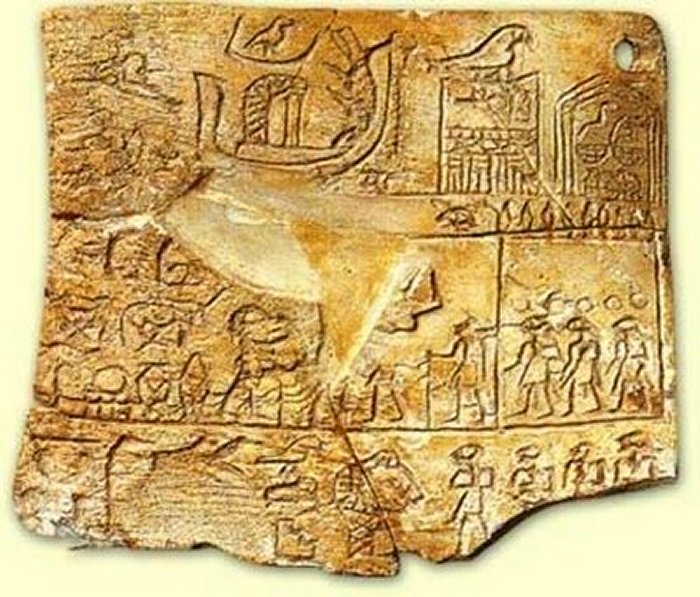Menes – Legendary First Monarch Probably Under Different Names Who Unified Egypt
A. Sutherland - AncientPages.com - The earliest rulers of the long-lasting civilization of Egypt were called "The followers of Horus." At the beginning of its long history, Egypt was united when an Upper Egyptian kingdom seized Lower Egypt in the north in the south.
The Upper Egyptian rulers called themselves "followers of Horus," and Horus became the tutelary deity of the unified country and its kings.
Left: Cartouche of Meni (Menes) from the Abydos King List in the temple of Seti I at Abydos. Right: Close-up view of Narmer on the Narmer Palette. Image credit: Wikipedia
According to legend and myth, in approximately 3100 BC, the king who made this unification possible was Menes. He was known by the ancient Egyptians as M'na (in Greek: Mên or Menes). It is assumed that he reigned from 30 to 60 years.
His name is similar to Minos in Greece, Manis in Phrygia, or Menu in India's history. Many modern scholars identified him with the archaic Egyptian kings, Horus Narmer of Naqada III (3200 to 3000 BC) and Horus Aha.
The Horus Name was the oldest part of the royal titular in ancient Egypt. It was a very important and powerful title with great symbolic meaning linking the king's earthly power with the divine power of the mighty celestial god Horus, the falcon.
Many researchers identify Narmer with the First Dynasty pharaoh Menes, who is also sometimes credited with the unification of Egypt, as the first pharaoh. This conclusion is based on the Narmer Palette, in which Narmer is shown as the unifier of Egypt. Image: Egyptian Museum, Cairo via Wikipedia
Priest and historian Manetho, who lived and worked during the Ptolemaic era in the early 3rd century BC, referred to him as 'Menes,' and Herodotus of Halicarnassus (c.480-c.429 BC) mentioned him as 'Min.'
According to tradition - not supported by the archeological record dated to the times of Menes – he was an important monarch always placed at the top of Egypt's dynastic lists, although there were no contemporary monuments or inscriptions referring to him.
Whether he was a legendary or real historical figure has not been determined yet.
Legendary Menes is credited with diverting the course of the Nile in Lower Egypt and founding a brand new administrative city located near the delta and the Nile Valley – 'Inbuhedj' (or 'White Walls').
This city, later known as Mennefer (Memphis), was one of the oldest and most important cities, situated 20 km (12 mi) south of Giza.
An ivory label found at Naqada shows Narmer's successor, Aha, and could imply that Aha may have been – Menes. Image via touregypt.net
At Memphis, he also founded the temple of Ptah, the divine Craftsman and Potter of the gods, identified by the Greeks as the blacksmith, Hephaestus (Vulcan).
This legendary king Menes who achieved all this, is not attested by archaeology. No object bearing his name or an image was found, but it is known that kings had several names.
Did Menes appear under a different name?
The Narmer palette we mentioned earlier could be proof that Narmer was Menes. The palette shows a King of Egypt wearing two crowns – of both Upper and Lower Egypt. The palette commemorates the victory, a significant historical event of the unification of the two lands in one. Also, an ivory label found at Naqada shows Narmer's successor, Aha, and could imply that Aha may have been – Menes.
Menes is, in fact, a mystery because he could also be Horus Aha or Narmer, as many researchers have suggested. Perhaps the figure of king Menes was based on the legendary victories of several kings, but what's most important is the first dynasty of Egyptian kings had begun.
Updated on June2, 2022
Written by – A. Sutherland AncientPages.com Staff Writer
Copyright © AncientPages.com All rights reserved. This material may not be published, broadcast, rewritten or redistributed in whole or part without the express written permission of AncientPages.com
Expand for referencesReferences:
W. M. Flinders Petrie, The Royal Tombs of the Earliest Dynasties
E. J. Sweeney, The Genesis of Israel and Egypt
More From Ancient Pages
-
 Unique 2,000-Year-Old Decorated Roman Sandal Lost By Well-Cleaner Found In Spain
Archaeology | Oct 19, 2023
Unique 2,000-Year-Old Decorated Roman Sandal Lost By Well-Cleaner Found In Spain
Archaeology | Oct 19, 2023 -
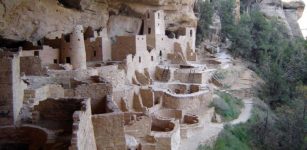 Sophisticated Masonry In Anasazi Dwelling Ruins At Mesa Verde National Park, Colorado, USA
Civilizations | Aug 11, 2015
Sophisticated Masonry In Anasazi Dwelling Ruins At Mesa Verde National Park, Colorado, USA
Civilizations | Aug 11, 2015 -
 3,300-Year-Old Bronze Figurine Of Canaanite God Unearthed At Lost Biblical City
Archaeology | Apr 12, 2020
3,300-Year-Old Bronze Figurine Of Canaanite God Unearthed At Lost Biblical City
Archaeology | Apr 12, 2020 -
 Steel Was Already Being Used In Europe 2,900 Years Ago – New Study
Archaeology | Mar 1, 2023
Steel Was Already Being Used In Europe 2,900 Years Ago – New Study
Archaeology | Mar 1, 2023 -
 Unique 8,400-Year-Old Burial Of A Dog Different From Modern Dogs Discovered In Sweden
Archaeology | Sep 25, 2020
Unique 8,400-Year-Old Burial Of A Dog Different From Modern Dogs Discovered In Sweden
Archaeology | Sep 25, 2020 -
 Ancient Mystery Of The Unknown White Bearded Rulers
Civilizations | Apr 21, 2020
Ancient Mystery Of The Unknown White Bearded Rulers
Civilizations | Apr 21, 2020 -
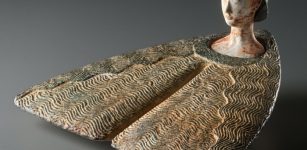 Strange Flat Idol Sculpture From Bactria Remains Unexplained
Artifacts | Sep 26, 2019
Strange Flat Idol Sculpture From Bactria Remains Unexplained
Artifacts | Sep 26, 2019 -
 Home Of The Gods – The Return Of The Gods – Part 3
Civilizations | Jun 14, 2018
Home Of The Gods – The Return Of The Gods – Part 3
Civilizations | Jun 14, 2018 -
 Ponce De Leon’s Quest For The Fountain Of Youth In Florida
Featured Stories | Jun 12, 2019
Ponce De Leon’s Quest For The Fountain Of Youth In Florida
Featured Stories | Jun 12, 2019 -
 Giant 2,000-Year-Old Cat Geoglyph Discovered At Nazca In Peru
Archaeology | Oct 22, 2020
Giant 2,000-Year-Old Cat Geoglyph Discovered At Nazca In Peru
Archaeology | Oct 22, 2020 -
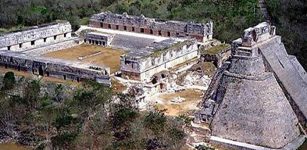 Ancient City Of Uxmal And Magnificent Pyramid Of The Magician
Featured Stories | Dec 19, 2015
Ancient City Of Uxmal And Magnificent Pyramid Of The Magician
Featured Stories | Dec 19, 2015 -
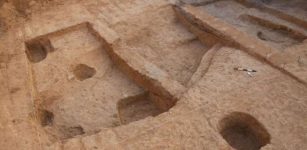 6,500-Year-Old Copper Workshop Unearthed In Negev Desert
Archaeology | Oct 6, 2020
6,500-Year-Old Copper Workshop Unearthed In Negev Desert
Archaeology | Oct 6, 2020 -
 Is A Viking Settlement And An Even Older Church Hidden Under St. Clement’s Church In Norway?
Archaeology | Apr 13, 2017
Is A Viking Settlement And An Even Older Church Hidden Under St. Clement’s Church In Norway?
Archaeology | Apr 13, 2017 -
 Isabel Neville And Unsolved Mystery Of Her Death
Featured Stories | Mar 28, 2019
Isabel Neville And Unsolved Mystery Of Her Death
Featured Stories | Mar 28, 2019 -
 Evidence Of Brain Surgery Performed 3,000 Years Ago Discovered In Tel Megiddo, Israel
Archaeology | Feb 23, 2023
Evidence Of Brain Surgery Performed 3,000 Years Ago Discovered In Tel Megiddo, Israel
Archaeology | Feb 23, 2023 -
 Abric Romaní Cave: New evidence indicates Neanderthals used to heat water some 60,000 years ago
Human Beginnings | Aug 31, 2015
Abric Romaní Cave: New evidence indicates Neanderthals used to heat water some 60,000 years ago
Human Beginnings | Aug 31, 2015 -
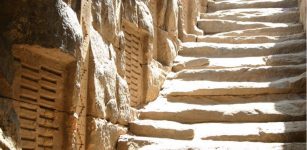 5,000-Year-Old Tradition Of Nilometer: Water Measurement Device From Pharaonic Times
Ancient History Facts | Jun 15, 2018
5,000-Year-Old Tradition Of Nilometer: Water Measurement Device From Pharaonic Times
Ancient History Facts | Jun 15, 2018 -
 Hopi Ancestors Witnessed Flying Shields In The Skies Over Palitkwapi – The ‘Red City’
Civilizations | Apr 8, 2017
Hopi Ancestors Witnessed Flying Shields In The Skies Over Palitkwapi – The ‘Red City’
Civilizations | Apr 8, 2017 -
 Incredible 2,300-Year-Old Roman-Etruscan Time Capsule Opened In San Casciano dei Bagni, Italy
Featured Stories | Dec 20, 2023
Incredible 2,300-Year-Old Roman-Etruscan Time Capsule Opened In San Casciano dei Bagni, Italy
Featured Stories | Dec 20, 2023 -
 Magnificent Ancient Egyptian Gold And Soapstone Jewelry Discovered At Tell El-Amarna Necropolis
Archaeology | Dec 18, 2022
Magnificent Ancient Egyptian Gold And Soapstone Jewelry Discovered At Tell El-Amarna Necropolis
Archaeology | Dec 18, 2022



